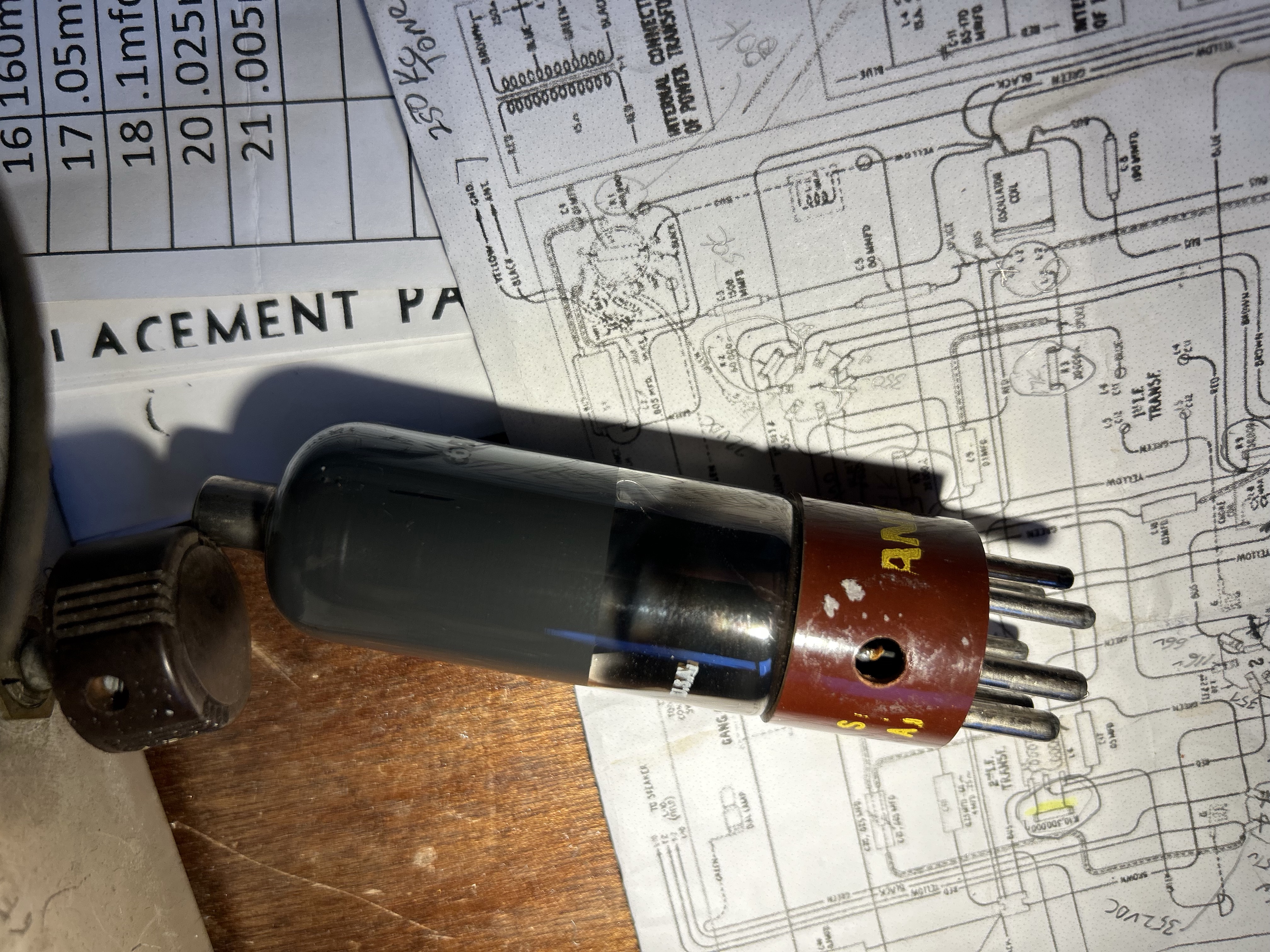Posts: 22
Threads: 3
Joined: Nov 2022
City: Victoria
State, Province, Country: BC
I think I have discovered why my radio cannot receive a signal. This comes after re-capping, new resistors and hours spent tracing circuitry.

. I have no clue why anyone would drill a hole in a tube base.
Matt
Posts: 1,253
Threads: 32
Joined: Jan 2014
City: Wellborn Florida
Someone might have tried to resolder a pin to a wire from the tube. Check is the glass loose from the base. Check make sure the glass part of the tube is what fits your set someone may have tried to installed a different tube. David
Posts: 4,856
Threads: 54
Joined: Sep 2008
City: Sandwick, BC, CA
That's an odd tube, it has a tall boy GT style envelope mounted to a seven pin base, it's like someone ordered a 6A7 and Sylvania took a 6A8GT, and rebased it with a base from a seven pin adapter, explaining the brown colour, and the extra hole. Anyhow try resoldering the grid cap, and the grid cap lead on the top, that is a weak point of all of those double ended tubes even more so then the base pins. I would suggest performing some voltage checks on the tube sockets, make sure that everything is there that is supposed to be there.
Do you have a means of testing your tubes?
Regards
Arran
(This post was last modified: 01-24-2025, 07:34 PM by
Arran.)
Posts: 22
Threads: 3
Joined: Nov 2022
City: Victoria
State, Province, Country: BC
I got the tube tested and it was TU.
I have installed a replacement tube.
During this last effort I discovered part of my problem was a bad potentiometer that was NOT fixed with contact cleaner.
Does anyone have a PN 73344, 4k, reverse taper with an off/on switch in their junk box?
Or maybe a source?
Thank you.
Posts: 16,467
Threads: 573
Joined: Oct 2011
City: Jackson
State, Province, Country: NJ
Umm....you do not clean potentiometers with contact cleaner. Unless cleaning the carbon layer of the base is the goal. You destroy potentiometers with it.
Cleaning is done with Fader lube.
Same company, Caig, makes both. The former is D5, the latter is F5.
People who do not drink, do not smoke, do not eat red meat will one day feel really stupid lying there and dying from nothing.
 . I have no clue why anyone would drill a hole in a tube base.
. I have no clue why anyone would drill a hole in a tube base.


![[-] [-]](https://philcoradio.com/phorum/images/bootbb/collapse.png)


